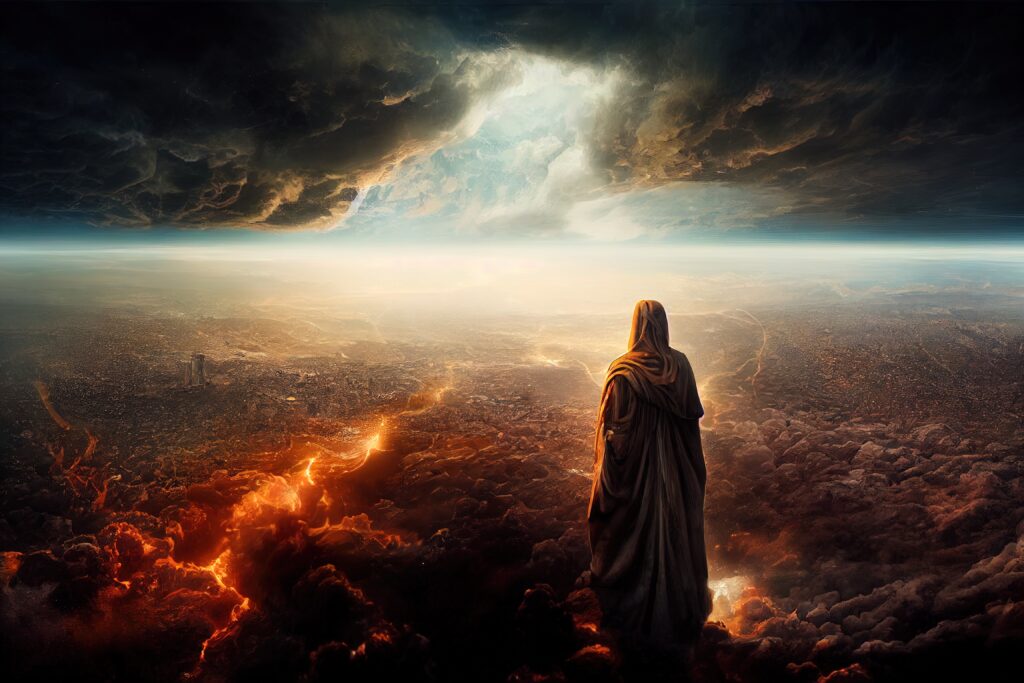
Jesus Meets the Churches Where They Are.
“Therefore, write the things which you have seen, and the things which are, and the things which will take place after these things.” Revelation 1:19 NASB
Jesus appears on the scene of Revelation in spectacular fashion (Rev. 1:12–20). The same Jesus is in close relationship with the seven churches (Rev. 1:20). He knows each of them intimately (Rev. 2:2, 9, 13, 19; Rev. 3:1, 8, 15). And He introduces Himself to each church with one, two, or three characteristics from the earlier vision. The message to Ephesus (Rev. 2:1–7), for example, describes Jesus as the One who holds the seven stars in His hand (Rev. 1:20) and walks among the seven golden lampstands (Rev. 1:12, 13). In the message to Smyrna (Rev. 2:8), Jesus is the First and the Last, the One who died and came back to life (Rev. 1:17, 18). In the letter to Pergamum, He approaches with a sharp, two-edged sword (Rev. 2:12, Rev. 1:16). So it goes throughout the seven church letters. Here’s the interesting thing. Jesus presents Himself in a different way to each of the seven churches. He is able to adapt to each church’s particular needs and circumstances. In other words, He meets each church as it is. And if no church and no Christian has the full picture of Jesus, then we all have reason to be humble. We are all learners, even with all that we have been given.
The author of Revelation often embeds clues about the organization and key ideas of the book in the transition texts. One of those transition texts is Revelation 1:19. In this text, John lays out the plan of the whole book. The text begins, “ ‘Write, therefore, what you have seen’. This sentence parallels Revelation 1:11: “ ‘Write what you see’. Revelation 1:11 is present tense and Revelation 1:19 is past tense. This means the entire vision of Revelation was given between the command in Revelation 1:11 and the command in Revelation 1:19. Now he is told to write it out.
What has John seen? Two things: “The things which are” and “the things which shall be hereafter” (Rev. 1:19).
So the book of Revelation includes both things current at the time of the seven churches and things that were yet to come, from their perspective. In Revelation 4:1 Jesus says to John, “Come up here, and I will show you what must take place after these things” (NASB.) This statement is similar to Revelation 1:19. Beginning with Revelation 4:1, the rest of Revelation focuses primarily on the future after John’s time. While there are flashbacks to the cross (Rev. 5:6, Rev. 12:11), and even events before Creation (Rev. 12:4, 7, 9), the primary focus, for most of the book, is events future to John’s day.
What, Then, are “the things which are and the things which will take place after this” in Revelation 1:19? The answer: everything between Revelation 1:19 and 4:1, namely, the messages to the seven churches. As we shall see, the seven messages also have prophetic significance for the whole Christian era, in addition to addressing the situation of those seven churches and the messages that Jesus brings to them. Careful attention to Revelation 1:19 shows how key texts of Revelation can help readers see the structure in John’s mind and in the mind of the One who gave him the vision.
The messages to the seven churches are “prophetic letters.” They are more like Matthew 24 than they are like Daniel 7 or Revelation 13. So their message concerns seven actual churches in Asia Minor, the ones that originally received them (Rev. 1:4, 11), and, by extension, for all those who read these messages (Rev. 1:3; Rev. 2:7, 11, 17, 29; and so on).
There were, however, more than seven churches in Asia Minor, but the spiritual conditions in those churches parallel the spiritual conditions of Christianity in different historical periods from the time of John until today. So embedded in these messages to seven historical churches was a grand survey of the major developments of Christian history.
